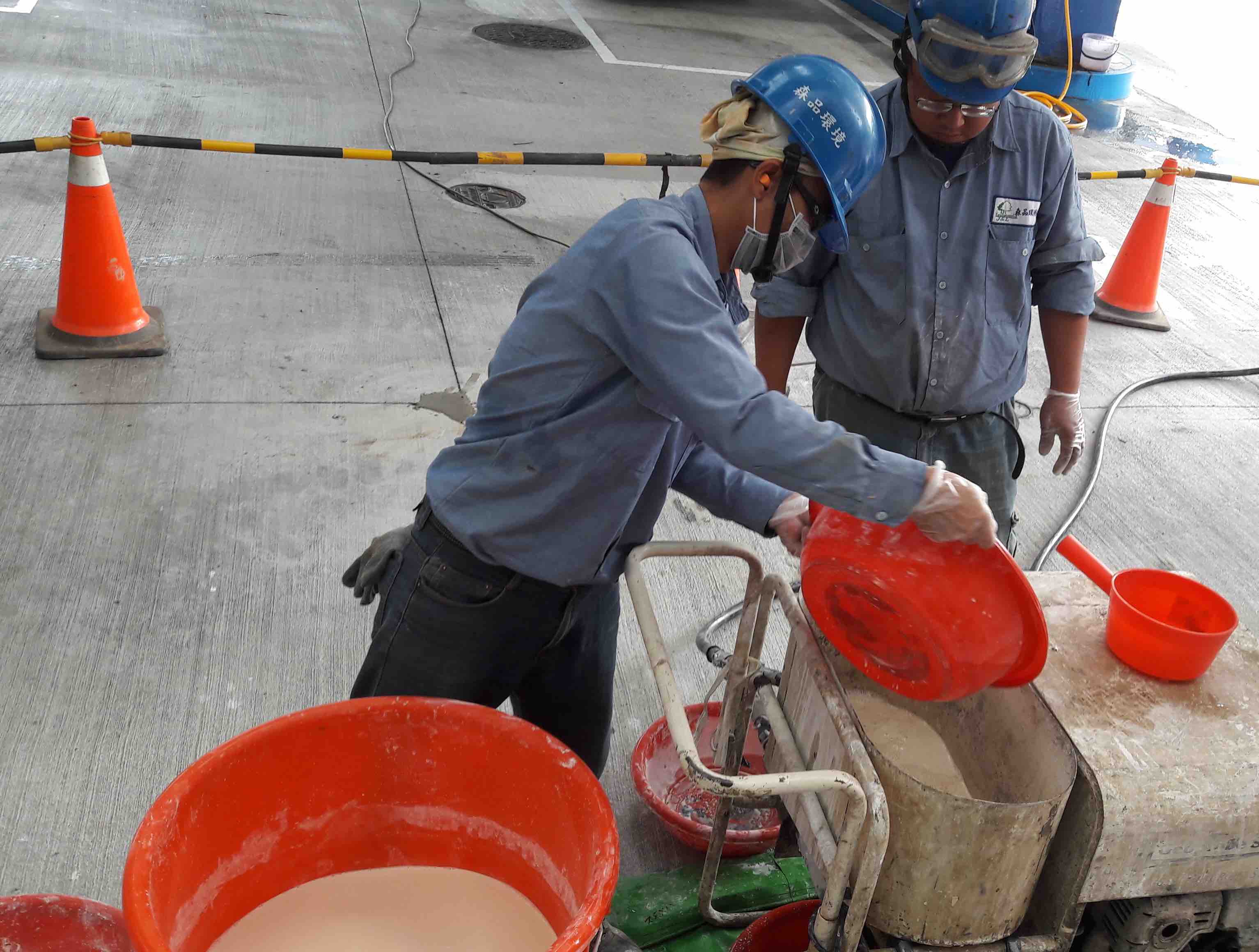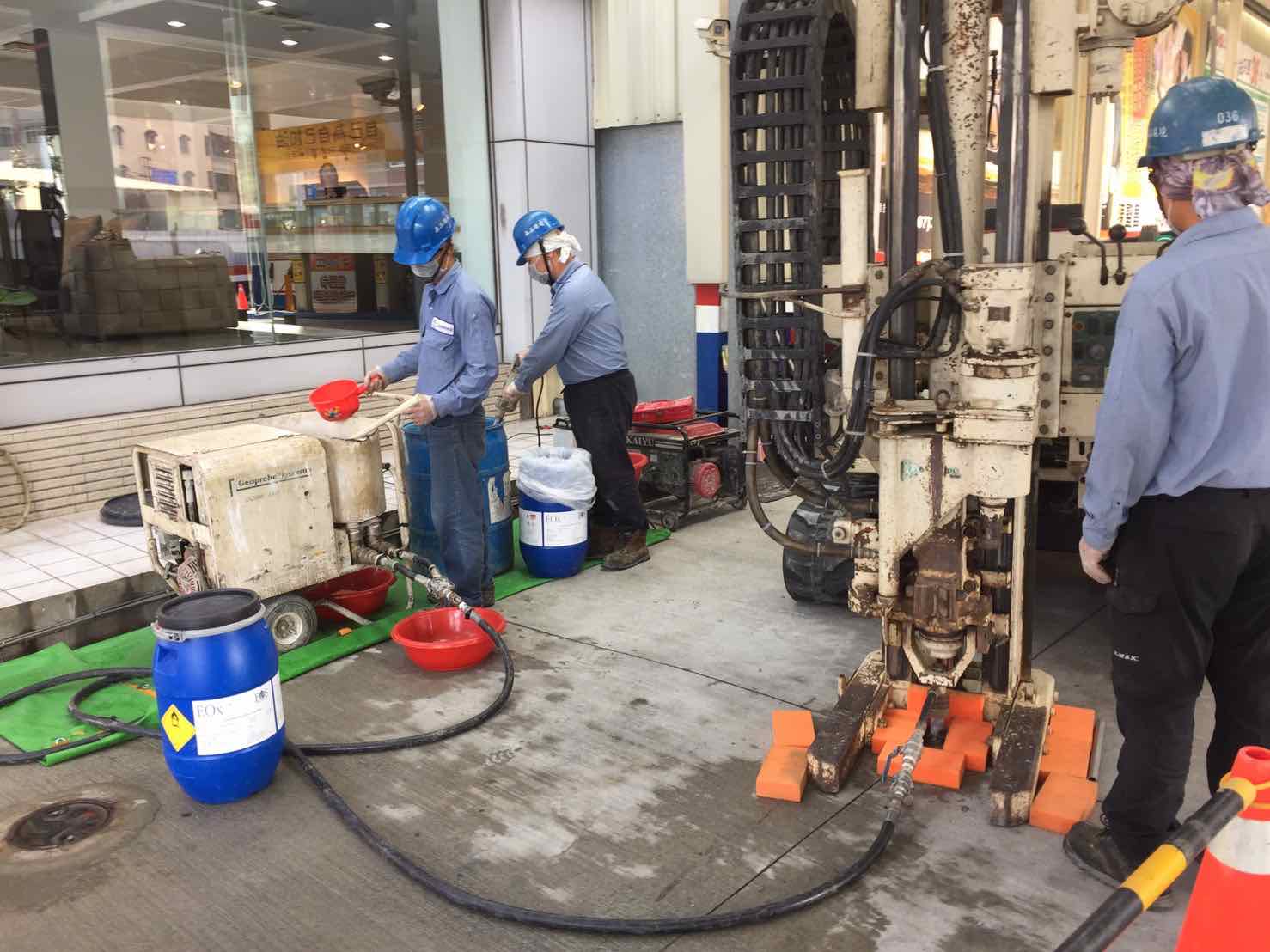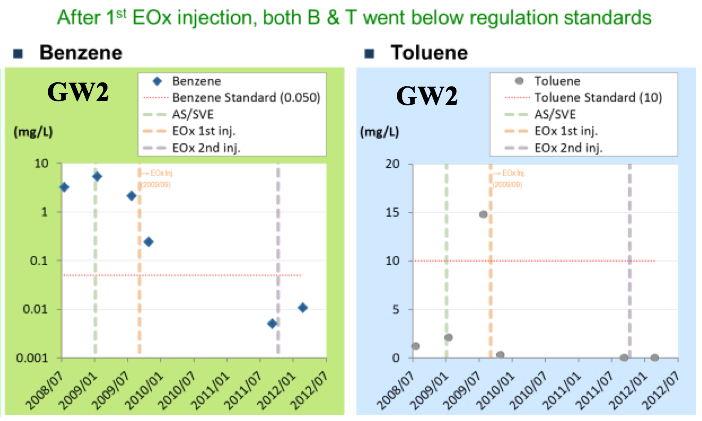Combination of EOx® with AS/SVE System for Groundwater Remediation in a Gas Station

PROBLEM
Benzene and Toluene from a leaking UST had contaminated groundwater at an operating gas station in southern Taiwan. Previous remediation efforts including in situ chemical oxidation (ISCO), air sparging and soil vapor extraction (AS/SVE) system had been implemented with limited remedial effect.
PROJECT GOAL
• Control plume migration and recover the mass of contaminants.
• Enhance biodegradation of Benzene and Toluene.
• Meet local regulatory standards of Benzene and Toluene in groundwater.
• Enhance biodegradation of Benzene and Toluene.
• Meet local regulatory standards of Benzene and Toluene in groundwater.

METHODOLOGY
• A treatment train that applied AS/SVE physical system followed by aerobic bioremediation.
• Remedial system including horizontal and vertical AS/SVE wells was designed and installed for later injection of EOx®.
• In total 11 AS wells and 5 SVE wells were installed and operated for 8 months before EOx® injection.
• Bottom-up injection of EOx® slurry with Geoprobe was performed twice within 2 years.
• DO, ORP, water temperature, EC, pH and water level were monitored every 3 months.
• Remedial system including horizontal and vertical AS/SVE wells was designed and installed for later injection of EOx®.
• In total 11 AS wells and 5 SVE wells were installed and operated for 8 months before EOx® injection.
• Bottom-up injection of EOx® slurry with Geoprobe was performed twice within 2 years.
• DO, ORP, water temperature, EC, pH and water level were monitored every 3 months.

RESULTS
• Benzene and Toluene in groundwater was decreased from 5.67 (113 times of regulatory standard) and 13.50 mg/L to under 0.10 and 0.01 mg/L respectively.
• Two orders of magnitude reduction in concentration indicated that the treatment train worked well with proper injection design.
• Two orders of magnitude reduction in concentration indicated that the treatment train worked well with proper injection design.
